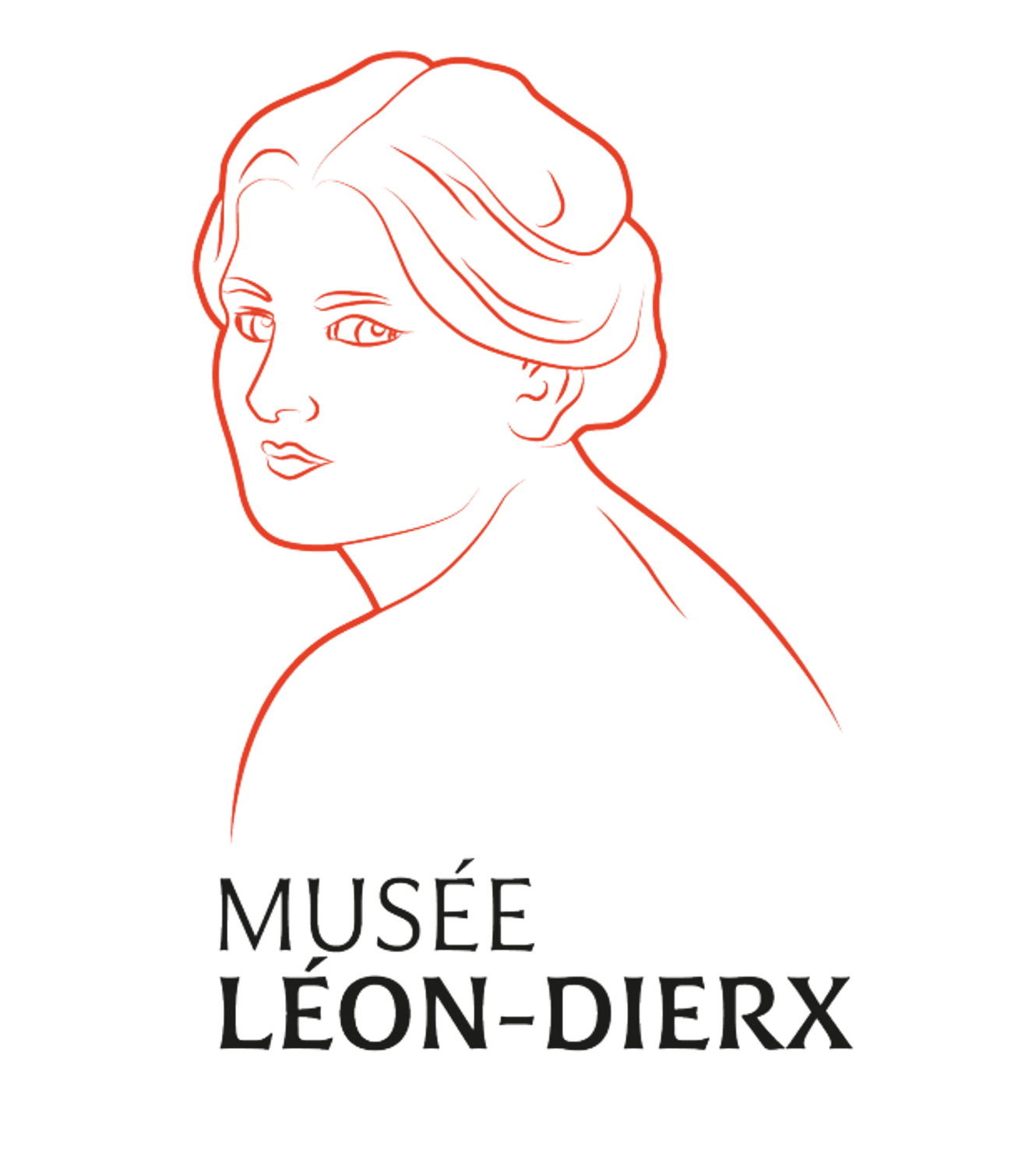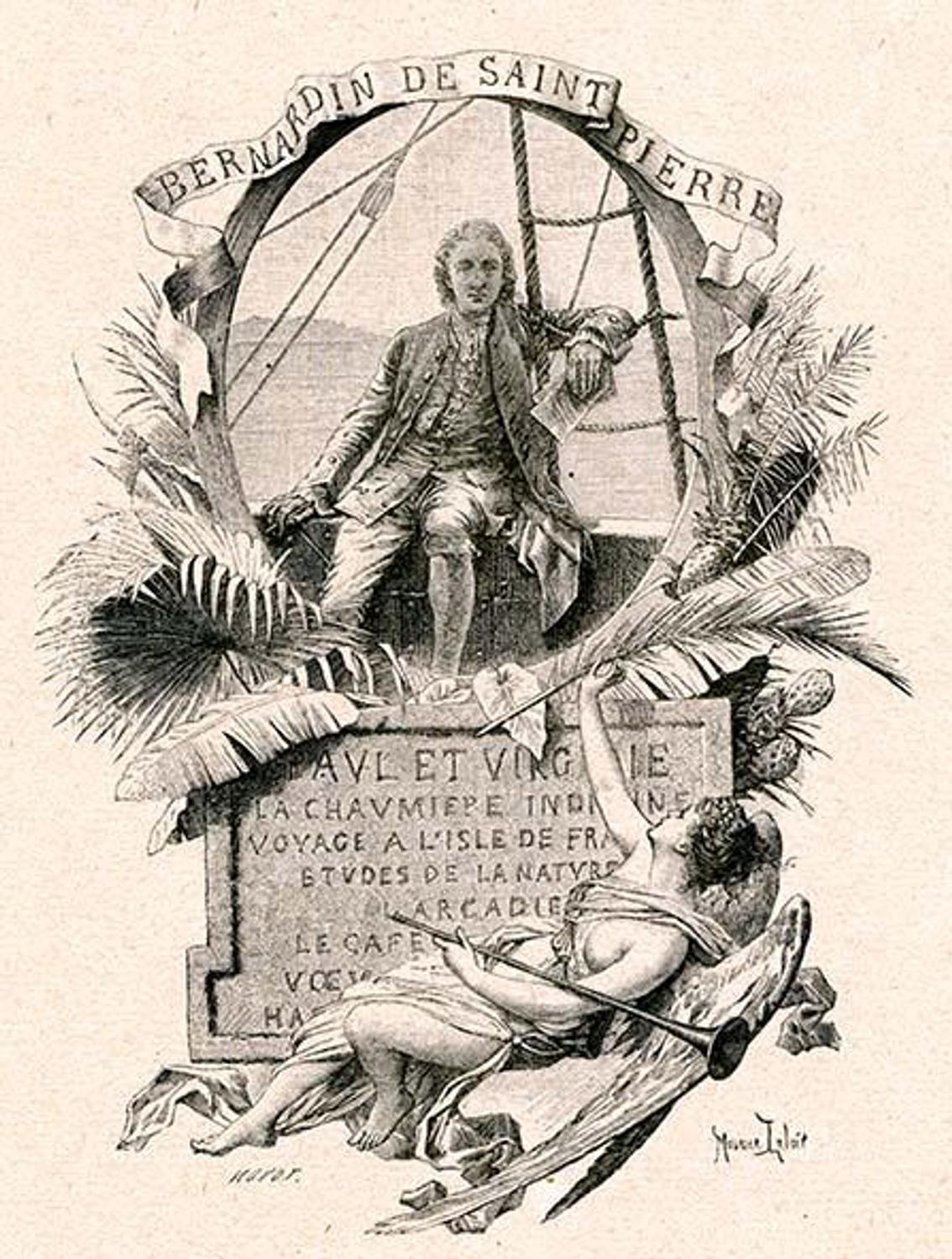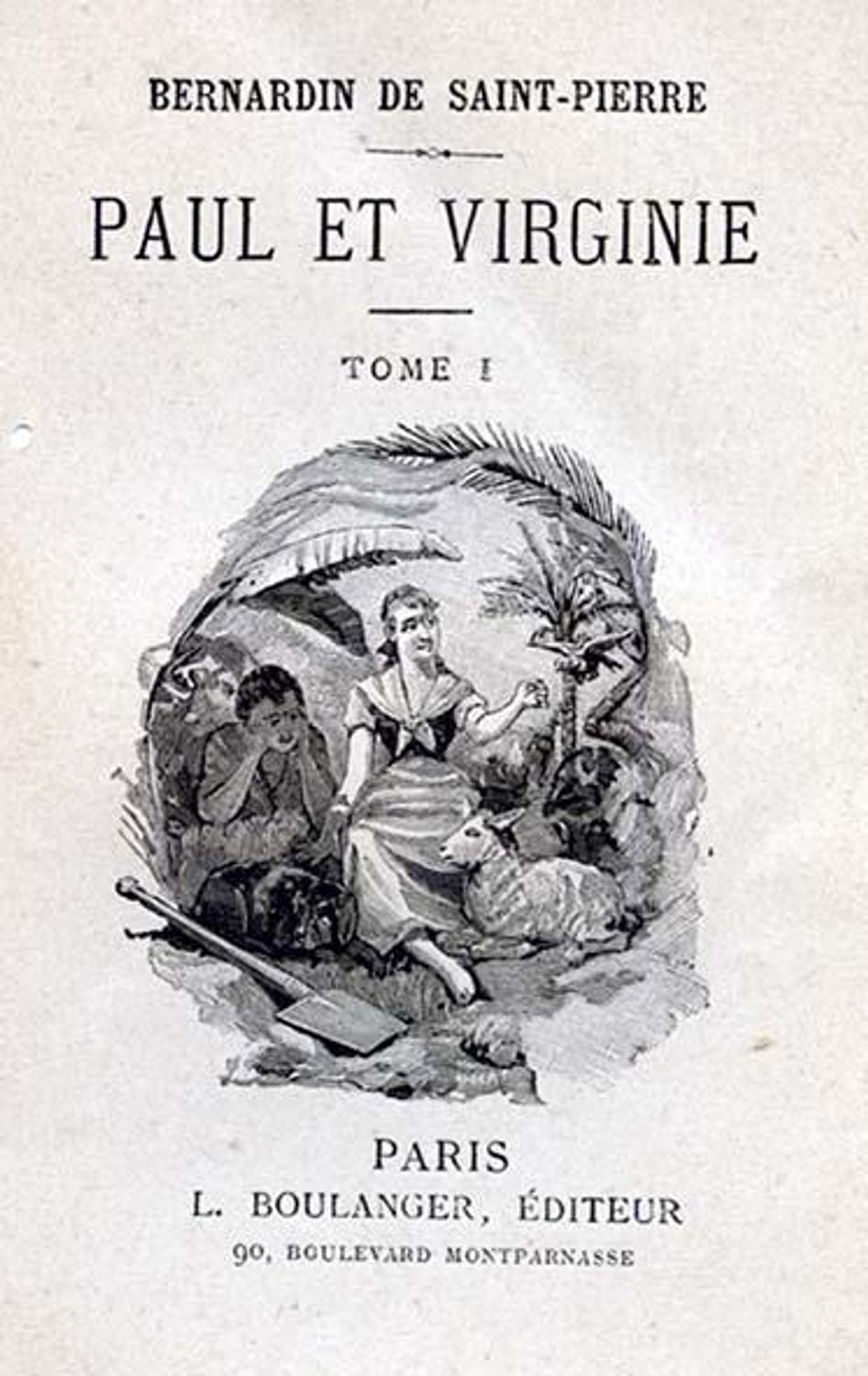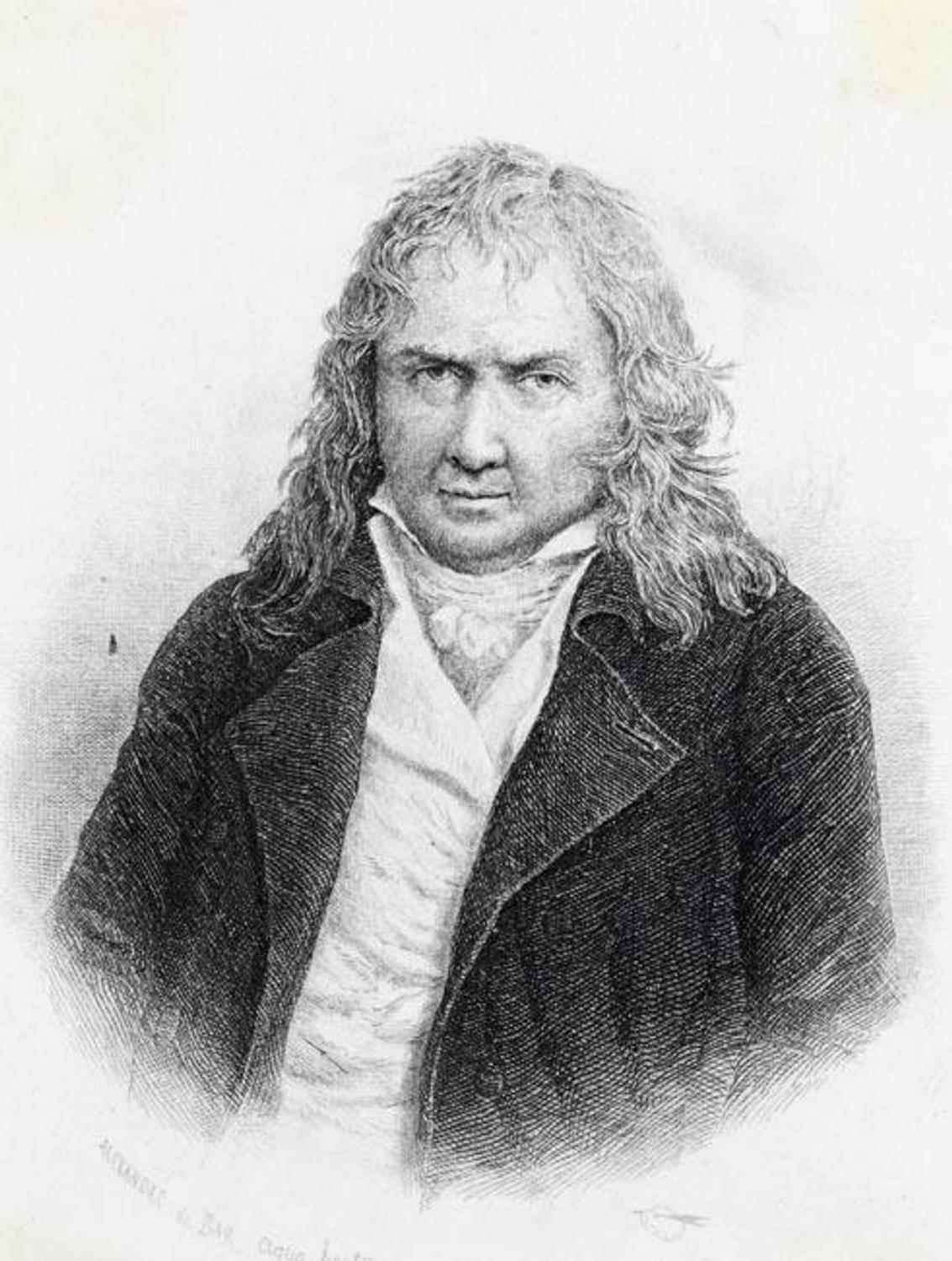PAUL AND VIRGINIA AND THE BIRTH OF EXOTICISM
Jacques-Henri Bernardin de Saint-Pierre, Paul et Virginie, C. Tallandier, [not dated] (front., portrait of the author by Maurice Leloir)
The art gallery’s Paul and Virginia collection
Paul and Virginia, a novel written by Jacques-Henri Bernardin de Saint-Pierre, tells the story of two lovers in the heavenly environment of the île de France (Mauritius island). This mythical work of fiction is intimately linked to the history of the islands in the south-western Indian Ocean.
Between 1911 and 1914, Marius and Ary Leblond built up for the Leon-Dierx museum the first French museum collection around the topic of Paul and Virginia. Etchings, published editions from different periods, dinner plates, sculptures and textiles were displayed in a specially dedicated room of the museum, representing the interior of a Creole house. The etchings hanging up on the walls at different levels were arranged around portraits of Bernardin de Saint-Pierre. The lithographs and original engravings were displayed beside a large number of different objects. A library that had belonged to the governor Mahe de La Bourdonnais, a character present in the story, contained various editions of the novel.
For Marius and Ary Leblond, the work by Bernardin de Saint-Pierre recalled the period of the pioneers, the French settlers in the Indian Ocean who came to develop the Mascareignes islands. Writers at the service of the French colonial empire, Marius and Ary Leblond used Paul and Virginia as a vehicle to focus on the history of French presence on the islands and celebrate the nation’s genius.
The collection, still today being completed by regular acquisitions, represents the third French public reference collection, after those at the the Bibliothèque nationale (French national library) and the Quai Branly-Jacques Chirac museum.
Jacques-Henri Bernardin de Saint-Pierre, Paul et Virginie, L. Boulanger, [not dated]
« Paul and Virginia » : the first exotic novel written in French
Paul and Virginia was published in 1788 as part of the fourth volume of Études de la nature (Studies of Nature), then as a separate volume in 1789. The plot is set in the île de France, an island Bernardin de Saint-Pierre was familiar with, having spent almost 3 years there from 1768 to 1771. In this exotic colonial environment, influenced by the philosophy of Jean-Jacques Rousseau, the author opposed the purity of nature and the savage character of civilisation.
Through this novel, belonging to the pastoral genre that had more or less fallen into oblivion in the 18thcentury, Bernardin de Saint-Pierre marked a turning point in the history of literature. The role played by the natural environment, which he described with virtually unequalled precision and meticulousness, as well as his taste for exoticism and daydream, all announced the arrival of Romanticism.
Paul and Virginia are brought up as brother and sister, with no education other than the generous lush natural environment and the tenderness, love and communication that link together the members of their community. However, with the arrival of adolescence, the attraction between two children changes in character. Virginia, of noble birth, is sent to Europe to be educated. She is unhappy there and, unable to submit to the hypocrisy of European society, returns to her native island. Caught in a shipwreck, she dies drowning before Paul’s eyes.
The novel met with huge success as soon as it was printed, a success reaching far beyond its frontiers. Few 18thcentury novels encountered such considerable fame as this idealised story. Countless editions of Paul and Virginia were issued, as well as translations into other languages. The story was adapted for the theatre, the opera, then later cinema and television and gave birth to an efflorescence of images representing episodes of the novel on different supports.
Alexandre de Bar, Portrait of Bernardin de Saint-Pierre, 1883
The author
Jacques-Henri Bernardin de Saint Pierre was born in Le Havre in 1737 and died on 21st January 1814 in his property of Eragny, on the banks of the river Oise.
From early childhood, he demonstrated an imaginative and exalted spirit. Attracted by far-flung places and inspired by reading Robinson Crusoe, at the age of 12, he embarked on a ship belonging to one of his uncles, which was sailing for Martinique.
At the age of 22, he went to study civil engineering, then embarked on a life of adventure, going from profession to profession and travelling from country to country: he visited Germany, Malta, Holland, Russia, Poland and Austria. On returning to France in November 1766, he wished to become a writer and wrote a travel log of his wanderings.
After achieving the grade of engineer-captain of the King for the île de France, at the time a French colony, he sailed to the island in February 1768, convinced that he would find happiness in this new world. His stay there turned out decisive, at the origin of his literary career and his humanistic commitment. However, the period of almost 3 years spent on the island put an end to his final illusions, leading him to denounce the administrative hierarchy on the island, the small-mindedness of the settlers and the horrors of slavery. Bernardin de Saint-Pierre was one of the few 18thcentury French authors to directly and unambiguously express his opposition to slavery and racism.
On returning to Paris in 1771, disenchanted but sensitive to the melancholic aspect of the natural environment he had so meticulously observed, he decided to make a living from writing. He was a member of the Société des gens de lettres (Writers’ Society), was a frequent visitor of the Salon of Julie de Lespinasse and the Société des philosophes (Philosophers’ society) and he also became friends with Jean-Jacques Rousseau, sharing his love of nature and rejection of civilisation.
In 1773, he published Voyage à l'île de France (Journey to the Île de France), an account written in the form of letters addressed to a friend, which did not achieve success. He finally became famous in 1784 when he published the first three volumes of his Études de la nature (Studies of Nature). The fourth volume, Paul and Virginia, written in 1788, brought him literary glory.
In 1792, he took up the post of bursar at the Jardin des Plantes (botanical gardens), and taught moral studies at the École normale (teachers’ training college), set up under the Convention. A member of the Institut when it was created in 1795, he was elected to the Académie française in 1803, becoming its president in 1807.








